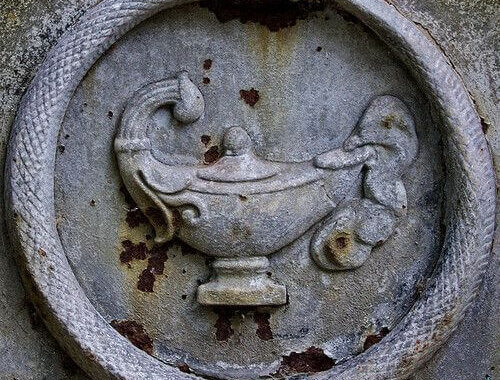Snakes on graves are rich in symbolism. They’ve been used in burial art for centuries. Their meaning can vary based on culture and context.
In many Western traditions, snakes represent eternity. This comes from their ability to shed their skin. It symbolizes rebirth and renewal. A snake eating its tail is called an ouroboros.

The ouroboros is a powerful symbol of the cycle of life. It represents the endless loop of birth, death, and rebirth. This can be comforting on a grave marker.
Some see the snake as a guardian of the dead. In this role, it protects the deceased’s spirit. It may ward off evil or guide the soul to the afterlife.
In Christian contexts, the snake can have negative meanings. It often represents temptation or sin. This stems from the biblical story of Adam and Eve.
However, not all Christian snake symbols are negative. The bronze serpent of Moses is seen as healing. It can represent Christ and salvation on a gravestone.
In ancient Egyptian culture, snakes were linked to royalty. They protected pharaohs in life and death. A snake on an Egyptian-style grave might show status.
Greek mythology associates snakes with wisdom and prophecy. They were sacred to Apollo, god of prophecy. On a grave, this could honor a wise or visionary person.
In some Native American traditions, snakes symbolize transformation. They’re seen as powerful spiritual creatures. This meaning might appear on indigenous graves.
The medical symbol of the caduceus features two snakes. It’s sometimes used on doctors’ gravestones. This links to their profession and service.
Snakes can also represent hidden knowledge or mysteries. This might suit someone who valued learning or discovery. It suggests depth beyond the surface.

In some cases, a snake might be part of a family crest. Here, it’s not symbolic but a heraldic element. It identifies the deceased’s lineage or heritage.
The style of the snake carving can affect its meaning. A realistic snake might have different implications than a stylized one. The snake’s position is also important.
A snake coiled around a cross can mean eternal life through Christ. A snake with an apple often refers to original sin. Context is key to interpretation.
Modern interpretations of snake symbols can vary widely. Some see them as representing strength or adaptability. Others might choose them for aesthetic reasons.
When encountering a snake on a grave, consider the whole design. Look for other symbols or inscriptions nearby. These can provide clues to the intended meaning.
Remember, symbol meanings can change over time. What was clear to the deceased might be less obvious now. Researching the era and culture can help with understanding.

